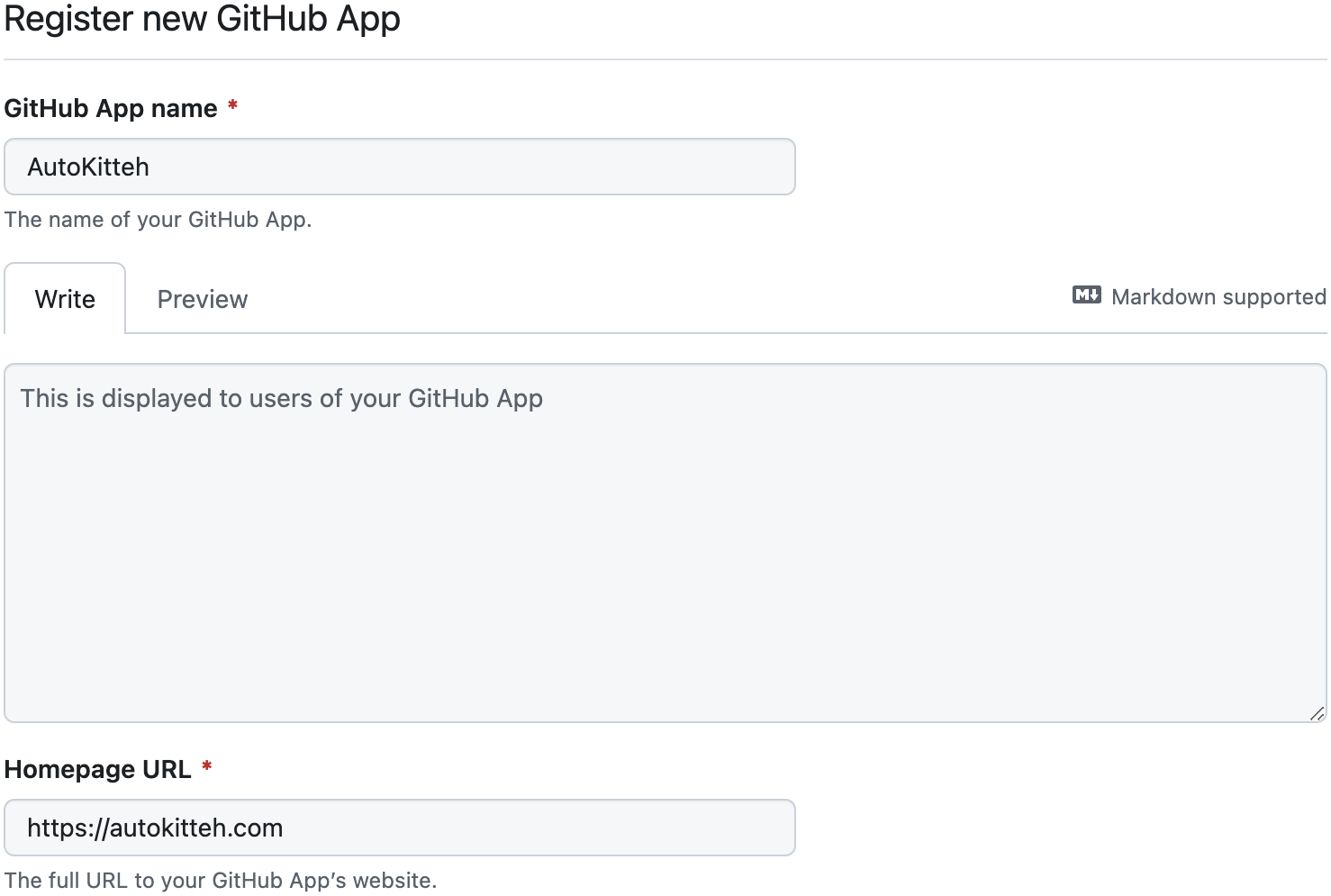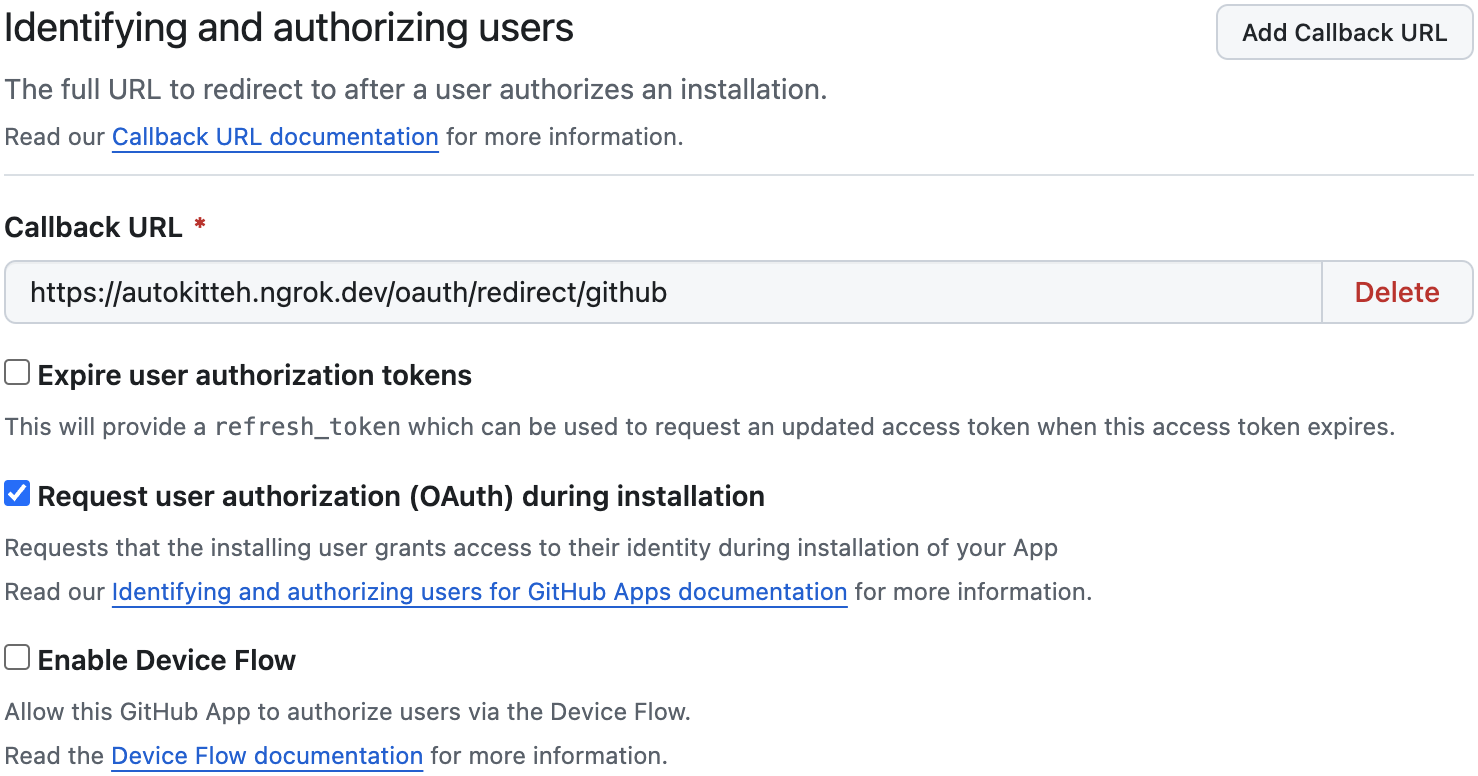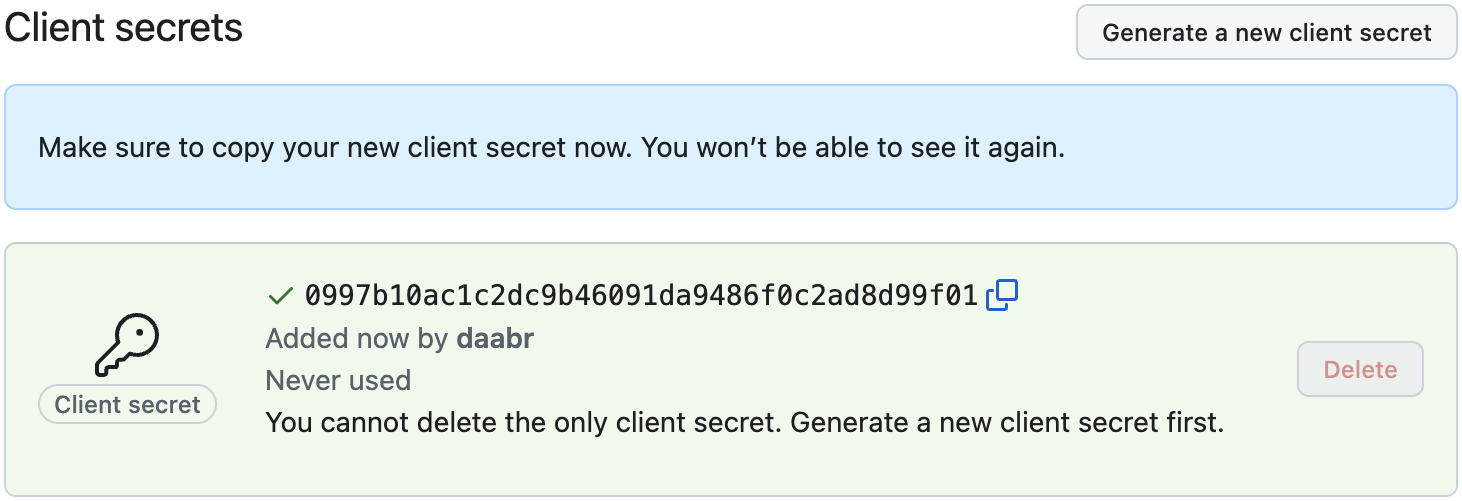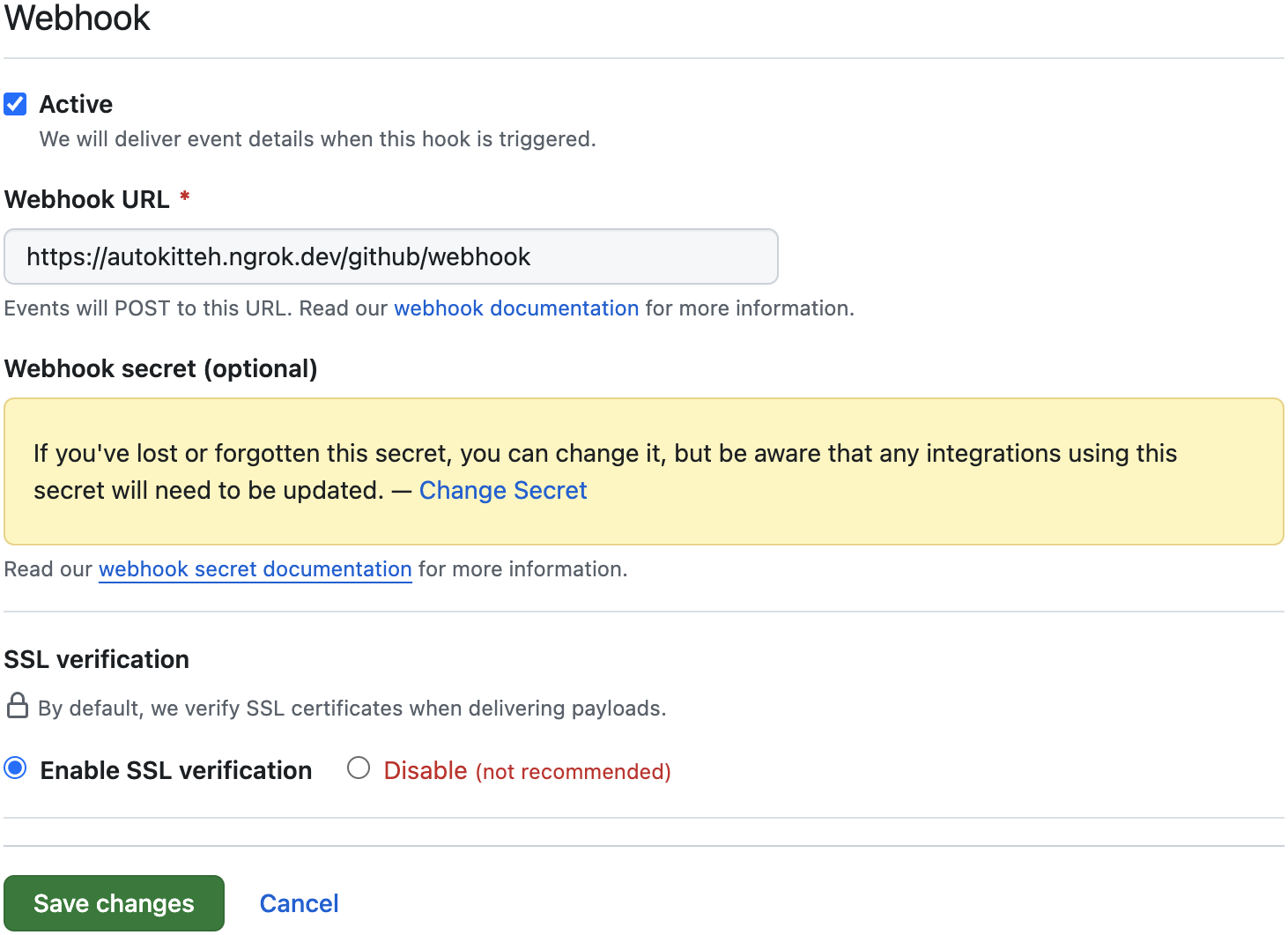Configuration
Follow this guide in order to enable AutoKitteh's GitHub connections to use a GitHub app with OAuth 2.0, instead of connection-specific Personal Access Tokens (PATs) and/or webhooks.
This guide assumes that the AutoKitteh server is already configured with HTTP tunneling.
Only organization and repository owners can install GitHub apps.
Create a GitHub App
If you want the GitHub app to be private, create it in the same GitHub user/organization scope where you intend to install it. If you want multiple GitHub users and organization to install it, create a public GitHub app.
Depending on your preference, use one of these options:
-
The app will be owned by you, i.e. a GitHub user:
https://github.com/settings/apps/new -
The app will be owned by a GitHub organization:
https://github.com/organizations/ORG-NAME/settings/apps/new
(This requires GitHub organization owner privileges)
Required Details
-
GitHub App name
-
Homepage URL

OAuth Callback URL
-
Callback URL:
https://PUBLIC-AK-ADDRESS/oauth/redirect/github
(wherePUBLIC-AK-ADDRESSis the AutoKitteh server's public tunnel address) -
Expire user authorization tokens: No
-
Request user authorization (OAuth) during installation: Yes

-
Post installation → redirect on update: Yes

Webhook
-
Active: Yes (default)
-
Webhook URL:
https://PUBLIC-AK-ADDRESS/github/webhook
(wherePUBLIC-AK-ADDRESSis the AutoKitteh server's public tunnel address) -
Webhook Secret: random and secret string of your choice

Permissions
Your choices in this section depend on a balance between functional needs and security constraints: which GitHub API calls you expect AutoKitteh scripts to make, and which GitHub API events you expect AutoKitteh scripts to respond to.
Permission changes have to be accepted by owners of existing installations before they become effective.
Here are some common repository permission examples:
- Actions (read and write)
- Administration (read-only)
- Commit statuses (read and write)
- Contents (read-only)
- Issues (read and write)
- Metadata (read-only)
- Pull requests (read and write)
Here are some common organization permission examples:
- API insights (read-only)
- GitHub Copilot Business (read and write)
- Members (read-only)
Subscribe to Events
Your choices in this section depend on the chosen permissions above, and which GitHub API events you expect AutoKitteh scripts to respond to.
Here are some common examples:
- Meta
- Commit comment
- Issue comment
- Issues
- Pull request
- Pull request review
- Pull request review comment
- Pull request review thread
- Repository
- Status
- Workflow dispatch
- Workflow job
- Workflow run
Where Can This Be Installed
Choose one of these options:
Only on this account(only the GitHub user/org that created this GitHub app)Any account(any GitHub user or organization)
Finally, click the green button "Create GitHub App".
App Secrets
-
Copy the
App IDandClient IDstrings at the top of the app settings page
-
Click the button "Generate a new client secret", and copy the new string; you will not be able to see it again once you leave this page

-
Double-check that the webhook secret was indeed set when you created the app; if it's not, set it again, and click the green "Save changes" button

-
Click the "Generate a private key" button at the bottom of the app settings page

- This will auto-download a file named
APP-NAME.DATE.private-key.pem - Convert this file into a single-line string with this command-line:
cat NAME.YY-MM-DD.private-key.pem | awk 'NF {sub(/\r/, ""); printf "%s\\n",$0;}' - Delete this file
- This will auto-download a file named
Configure AutoKitteh
There are two equivalent options to configure the AutoKitteh server to interact with your GitHub app - choose the one most suited for your needs and constraints.
For more details, see the Configuration Methods page.
config.yaml File
Stay tuned!
Environment Variables
Set this environment variable, based on the AutoKitteh server's address - either an HTTP tunnel's public address, or an internal address in a Virtual Private Cloud (VPC):
WEBHOOK_ADDRESS- Just the address, without the
http[s]://prefix, and without a path suffix
- Just the address, without the
Also set this environment variable:
GITHUB_APP_NAME- Based on the suffix of the app settings URL:
https://github.com/.../settings/apps/APP-NAME
- Based on the suffix of the app settings URL:
Also set the following environment variables, based on the values you were instructed to copy in the App Secrets section above:
GITHUB_APP_IDGITHUB_CLIENT_IDGITHUB_CLIENT_SECRET- Readbale only when generated
GITHUB_PRIVATE_KEY- Downloadable only when generated
- When setting the environment variable, the value has to be enclosed in
quotes (e.g.
GITHUB_PRIVATE_KEY="<key>") because it contains special characters
GITHUB_WEBHOOK_SECRET- Readable only when re/set
If your organization uses a private
GitHub Enterprise Server
(GHES) instead of https://github.com
https://github.comSet the environment variable GITHUB_ENTERPRISE_URL to the GHES URL inside
your organization's VPC without a path, i.e. a string that looks like
this: http[s]://host[:port].
Lastly, restart the AutoKitteh server for these settings to take effect.